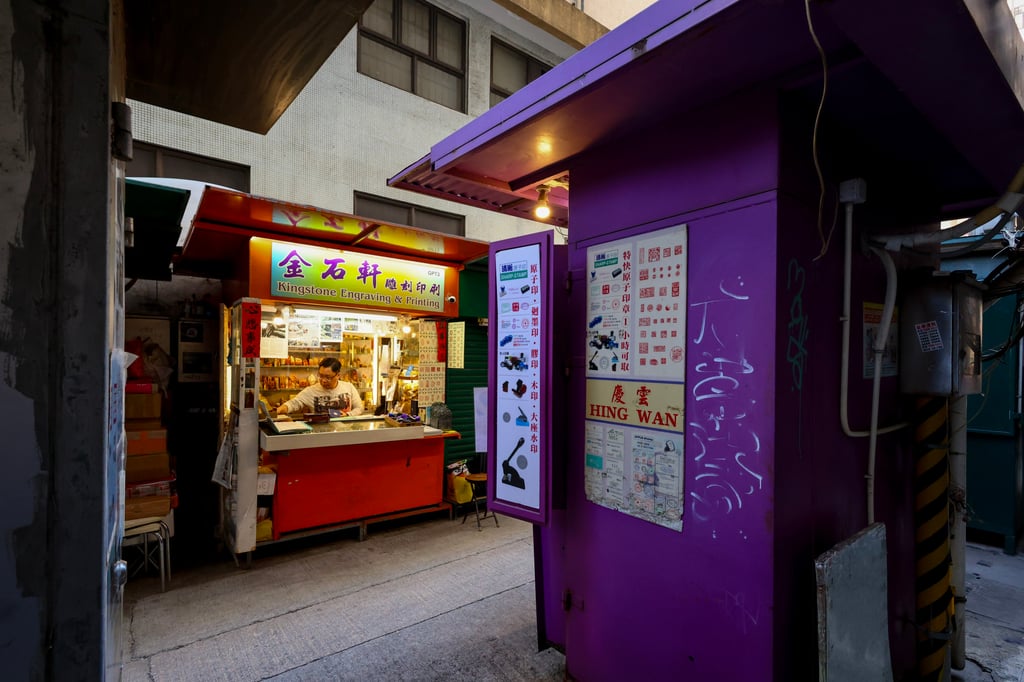From Trump stamps to animal carvings, stone seal maker keeps an ancient Chinese art alive
Third-generation seal engraver Yam Man-hong talks about preserving the craft at his tiny Hong Kong stall, and keeping up with the times

Man Wa Lane is an alley in one of Hong Kong’s oldest neighbourhoods, Sheung Wan. A 100-metre length of it nicknamed “Chop Alley” has been the home of Chinese stone seal makers since the 1930s.
Today, more than a dozen stalls specialising in stamps still line the alley, but the know-how involved in this ancient craft is fading, with only a few of the owners still making stone seals by hand.
Seal carving dates back to the Spring and Autumn period in China (770-476BC), when the tradition of signing documents with personalised engraved stone seals dipped in vermilion cinnabar paste began.
In the first century AD the practice spread to Japan, and later to Korea.

The use of stone seals remains common in the two countries, as well as among senior officials in mainland China. But in Hong Kong, the craft only gets the limelight when a stone seal sells for a lot of money at auction.